Sherry Harris's Blog, page 7
January 28, 2016
Welcome Author T.C. LoTempio!
Susannah here. Please give a Wicked Welcome to T.C. LoTempio, author of the Nick and Nora Mysteries!
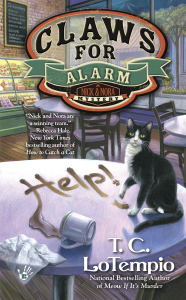 Tell us about your series and your latest book, CLAWS FOR ALARM.
Tell us about your series and your latest book, CLAWS FOR ALARM.
The Nick and Nora mysteries follow the adventures of ex-crime reporter Nora Charles, who’s moved back to her hometown of Cruz, California from Chicago to take over her late mother’s sandwich shop. She becomes the “human” of Nick, a tubby tuxedo cat who was formerly owned by a PI who’s currently MIA under mysterious circumstances. Together the two of them get involved in some pretty mysterious happenings!
In CLAWS FOR ALARM, the second Nick and Nora mystery, Nora’s investigation into the disappearance of Nick the cat’s former owner takes a backseat when her sister is accused of the murder of her art professor. As Nora delves into his past she learns that there’s a plethora of suspects: a trophy wife, a spoiled son, a scorned student mistress. Also complicating her investigation is the appearance of someone from her past – male, of course!
Susannah: What actor would make the best Nora Charles?
I’ve given this a lot of thought, LOL, and I can see Emma Stone as Nora, definitely! I’d have to think about who’d play Nick, though – I’m sure my cat ROCCO would want to audition for the role!
Doesn’t every writer????
Ooh, Toni, you’re mysterious, aren’t you? Who’s your favorite mystery writer of all time?
It’s impossible to pick just one, there are so many. I love the Laura Childs series, all three of them, and Rita Mae Brown’s Mrs. Murphy is a favorite as well. But I guess, if I had to choose – it would be Erle Stanley Gardner. I’ve always loved Perry Mason.
Favorite book (not necessarily a mystery) of all time?
Ah, without a doubt – it’s a tie: Gone with the Wind and The Thorn Birds.
Excellent choices! Who is your most-loved book boyfriend?
OMG – Ned Nickerson, of course!
![HPIM0751[1]](https://i.gr-assets.com/images/S/compressed.photo.goodreads.com/hostedimages/1453991649i/17901620.jpg) What is your writing process like? Early bird or night owl? Pantser or Plotter? Do you require special drinks or snacks?
What is your writing process like? Early bird or night owl? Pantser or Plotter? Do you require special drinks or snacks?
Well, I work a day job so usually I try to get in an hour or two after work, if I’m not too tired. Otherwise, it’s four hours on Saturday and five on Sunday. NO snacks, but I do like to listen to music. Right now my favorites are the soundtrack from Smash and the Phantom of the Opera. Pantser or Plotter? A bit of both, but heavy on the Pantser.
Best writing advice you ever heard or read?
The best advice I ever got was my ex-supervisor telling me to stop writing about vampires and start writing about my cat. The second best advice I ever got was when Penguin wanted changes in the original manuscript of the first book, MEOW IF ITS MURDER, and I was hesitant about it (in the original, Nick the cat talked – Berkley didn’t like that). Carole Nelson Douglas, who writes the Midnight Louie series, told me to “suck it in and do the changes.”
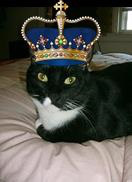
It’s good to be the King!
Who is ROCCO? Why is his name always in caps? Do you have any other pets?
ROCCO is my tuxedo cat, the inspiration for Nick Charles, the writer of his blog, www.catsbooksmorecats.blogspot.com, and a reviewer of cozies for Night Owl. He’s a twenty-plus-pound tuxedo with “cattitude” and he wouldn’t spell his name any other way than with caps, because he feels he’s larger than life. I say he’s just large, LOL. Yes, I do have two other cats, a gold and white named Maxx and a gray and white named Gata. But ROCCO is the undisputed “King” of our household – or at least he thinks he is.
![Fred_Profile%20(2)[1]](https://i.gr-assets.com/images/S/compressed.photo.goodreads.com/hostedimages/1453991649i/17901622.jpg)
Toni and Rocco
I believe I may have just the queen for ROCCO–my tuxedo cat, Elvira. Not that there could be any offspring produced, but they would look nice together! What’s next for you?Well, right now we are waiting to hear if Berkley wants more Nick and Noras. (I sincerely hope so) I’ve also finished the first two books in another series that my agent is shopping around right now.
We hope so too, Toni! And trust me when I say the Wickeds know the feeling, LOL! Thanks so much for being here!
Readers: Questions for Toni? Ask away.
Here’s where you can connect with Toni:
Web:www.catsbooksmorecats.blogspot.com; www.tclotempio.com
Facebook: https://www.facebook.com/toni.lotempio.5
Twitter:@RoccoBlogger
Filed under: Guest posts, Jane's posts, Sadie's Posts, Susannah's posts, Uncategorized Tagged: Claws For Alarm, Meow If It's Murder, Nick and Nora Charles, T.C. LoTempio, tuxedo cat

Welcome Author T.C. LeTempio!
Please give a Wicked Welcome to T.C. LoTempio, author of the Nick and Nora Mysteries!
 Tell us about your series and your latest book, CLAWS FOR ALARM.
Tell us about your series and your latest book, CLAWS FOR ALARM.
The Nick and Nora mysteries follow the adventures of ex-crime reporter Nora Charles, who’s moved back to her hometown of Cruz, California from Chicago to take over her late mother’s sandwich shop. She becomes the “human” of Nick, a tubby tuxedo cat who was formerly owned by a PI who’s currently MIA under mysterious circumstances. Together the two of them get involved in some pretty mysterious happenings!
In CLAWS FOR ALARM, the second Nick and Nora mystery, Nora’s investigation into the disappearance of Nick the cat’s former owner takes a backseat when her sister is accused of the murder of her art professor. As Nora delves into his past she learns that there’s a plethora of suspects: a trophy wife, a spoiled son, a scorned student mistress. Also complicating her investigation is the appearance of someone from her past – male, of course!
What actor would make the best Nora Charles?
I’ve given this a lot of thought, LOL, and I can see Emma Stone as Nora, definitely! I’d have to think about who’d play Nick, though – I’m sure my cat ROCCO would want to audition for the role!
Doesn’t every writer????
Ooh, Toni, you’re mysterious, aren’t you? Who’s your favorite mystery writer of all time?
It’s impossible to pick just one, there are so many. I love the Laura Childs series, all three of them, and Rita Mae Brown’s Mrs. Murphy is a favorite as well. But I guess, if I had to choose – it would be Erle Stanley Gardner. I’ve always loved Perry Mason.
Favorite book (not necessarily a mystery) of all time?
Ah, without a doubt – it’s a tie: Gone with the Wind and The Thorn Birds.
Excellent choices! Who is your most-loved book boyfriend?
OMG – Ned Nickerson, of course!
![HPIM0751[1]](https://i.gr-assets.com/images/S/compressed.photo.goodreads.com/hostedimages/1453991649i/17901620.jpg) What is your writing process like? Early bird or night owl? Pantser or Plotter? Do you require special drinks or snacks?
What is your writing process like? Early bird or night owl? Pantser or Plotter? Do you require special drinks or snacks?
Well, I work a day job so usually I try to get in an hour or two after work, if I’m not too tired. Otherwise, it’s four hours on Saturday and five on Sunday. NO snacks, but I do like to listen to music. Right now my favorites are the soundtrack from Smash and the Phantom of the Opera. Pantser or Plotter? A bit of both, but heavy on the Pantser.
Best writing advice you ever heard or read?
The best advice I ever got was my ex-supervisor telling me to stop writing about vampires and start writing about my cat. The second best advice I ever got was when Penguin wanted changes in the original manuscript of the first book, MEOW IF ITS MURDER, and I was hesitant about it (in the original, Nick the cat talked – Berkley didn’t like that). Carole Nelson Douglas, who writes the Midnight Louie series, told me to “suck it in and do the changes.”

It’s good to be the King!
Who is ROCCO? Why is his name always in caps? Do you have any other pets?
ROCCO is my tuxedo cat, the inspiration for Nick Charles, the writer of his blog, www.catsbooksmorecats.blogspot.com, and a reviewer of cozies for Night Owl. He’s a twenty-plus-pound tuxedo with “cattitude” and he wouldn’t spell his name any other way than with caps, because he feels he’s larger than life. I say he’s just large, LOL. Yes, I do have two other cats, a gold and white named Maxx and a gray and white named Gata. But ROCCO is the undisputed “King” of our household – or at least he thinks he is.
![Fred_Profile%20(2)[1]](https://i.gr-assets.com/images/S/compressed.photo.goodreads.com/hostedimages/1453991649i/17901622.jpg)
Toni and Rocco
I believe I may have just the queen for ROCCO–my tuxedo cat, Elvira. Not that there could be any offspring produced, but they would look nice together! What’s next for you?Well, right now we are waiting to hear if Berkley wants more Nick and Noras. (I sincerely hope so) I’ve also finished the first two books in another series that my agent is shopping around right now.
We hope so too, Toni! And trust me when I say the Wickeds know the feeling, LOL! Thanks so much for being here!
Here’s where you can connect with Toni:
Web:www.catsbooksmorecats.blogspot.com; www.tclotempio.com
Facebook: https://www.facebook.com/toni.lotempio.5
Twitter:@RoccoBlogger
Filed under: Guest posts, Jane's posts, Sadie's Posts, Susannah's posts, Uncategorized Tagged: Claws For Alarm, Meow If It's Murder, Nick and Nora Charles, T.C. LoTempio, tuxedo cat

January 27, 2016
Wicked Wednesday — Best Writing Advice
By Sherry — in Northern Virginia where we are still digging out.
As authors we hear lots of writing advice. Things like sit your butt in the chair, have a daily word count, and set regular writing hours — advice I often ignore. I was wondering, dear Wickeds, if there was some piece of advice you’d gotten that took your writing to the next level.
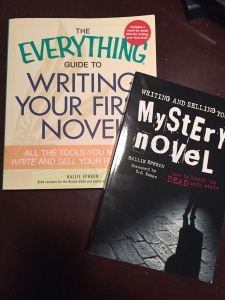 Sherry: I’ll start. One year at Crime Bake I was lucky enough to have Hallie Ephron read part of my unsold manuscript. The book features a protagonist who is a gemologist. My protagonist was searching for someone and enters a dark alley to look for the missing person. Hallie asked me why she would go into a dark alley with a murderer on the loose. I had no answer. Hallie said to keep her smart. In a rewrite my protagonist thinks she sees the missing person enter the alley. My takeaway was that if someone is going to do something dangerous/risky/foolish they’d better have a great reason for doing it! I try to keep that bit of advice at the forefront when I’m writing and editing. For those of you who want to hear more of Hallie’s great advice try her two excellent books on writing — The Everything Guide to Writing Your First Novel and Writing And Selling Your Mystery Novel.
Sherry: I’ll start. One year at Crime Bake I was lucky enough to have Hallie Ephron read part of my unsold manuscript. The book features a protagonist who is a gemologist. My protagonist was searching for someone and enters a dark alley to look for the missing person. Hallie asked me why she would go into a dark alley with a murderer on the loose. I had no answer. Hallie said to keep her smart. In a rewrite my protagonist thinks she sees the missing person enter the alley. My takeaway was that if someone is going to do something dangerous/risky/foolish they’d better have a great reason for doing it! I try to keep that bit of advice at the forefront when I’m writing and editing. For those of you who want to hear more of Hallie’s great advice try her two excellent books on writing — The Everything Guide to Writing Your First Novel and Writing And Selling Your Mystery Novel.
Edith: And you definitely do, Sherry! How many times have you added a comment to my manuscript to the effect that, “She wouldn’t do X. She’s smarter than that.” I didn’t realize I needed to thank Hallie, too (I’ll remedy that at my next opportunity).
Manuscript critiques by established authors are priceless. Hank Phillippi Ryan critiqued  the first twenty pages of my first mystery, Speaking of Murder. She said, “Nothing happens.” Whoa – she was right! I guess I fixed it well enough because she later gave the book a glowing cover endorsement. I also submitted a number of short stories to local anthologies in my early years of writing fiction — all rejected. Editor (and author) Susan Oleksiw remarked that I had set up a good story and drawn several intriguing characters, but I’d ended the tale before anything happened. So the piece of advice that changed my writing was: Something has to happen. Seems obvious, right?
the first twenty pages of my first mystery, Speaking of Murder. She said, “Nothing happens.” Whoa – she was right! I guess I fixed it well enough because she later gave the book a glowing cover endorsement. I also submitted a number of short stories to local anthologies in my early years of writing fiction — all rejected. Editor (and author) Susan Oleksiw remarked that I had set up a good story and drawn several intriguing characters, but I’d ended the tale before anything happened. So the piece of advice that changed my writing was: Something has to happen. Seems obvious, right?
Barb: I’ve mentioned that I’ve been in a writers’ group for twenty years, right? One piece of advice I quote all the time came from my colleague (and all-time critiquing great) Mark Ammons. “If you’re going to tell a lie, tell it fast. Don’t elaborate, don’t apologize and don’t look back.” What I take this to mean is that in every manuscript there is a “gimmie,” a plot point, action or decision the reader must buy for the story to work. Lots of times it’s just better to put it out there, without over-explaining, contexting, or rationalizing, before or after. It’s often when you pick at the point again and again, particularly if you give multiple, differing justifications, that the reader begins to question it. To me, voice is confident story-telling, and a strong enough voice can get you to believe just about anything.
Jessie: I would credit the agent we all share, John Talbot, with a piece of advice I tell myself at least once during the course of writing every book: “You can fix anything except a manuscript that isn’t written.”
Julie: What a great question! For me, it is trust your reader. I tend to over explain, and have learned to trust my readers to understand the journey without me explaining every single step.
Readers: Do you have a piece of advice that changed how you write? A wise word that changed your life in some important way?
Filed under: Wicked Wednesday Tagged: Hallie ephron, hank phillippi ryan, John Talbot, Susan Oleksiw, The Everything Guide to Writing Your First Novel, writing advice, Writing and Selling Your Mystery Novel

January 26, 2016
Another Lost Hero
By Liz, thrilled beyond measure that we didn’t bear the brunt of the killer snowstorm over the weekend!
I had a totally different blog post started for today—all about killing off real people as thinly disguised characters in novels—but I changed my mind. (Don’t worry, more on that another time. I have lots to say on the topic.)
I changed my mind because something happened recently that deserves attention.
It’s been a season of loss for so many people, myself included. From personal losses to losses that touch millions of people (David Bowie, Glenn Frey, who can relate?). Today, I wanted to pay tribute to another man who was recently lost—a man named Fred.
Fred lived in Boston. I didn’t actually know Fred – we never even met – but I know some of his friends and heard about his incredible story last year after he became ill. That story compelled me to mention Fred in my latest book, in my rescue shout-out section. While Fred had many human friends, what made him special was his friendship with another species – cats.

Photo credit: Danapel deVeer
For about thirty years, he took care of hundreds – maybe thousands – of stray, abandoned and feral cats on the Boston streets. This meant giving every extra cent of his social security, which he lived off of, to the cats for food, shelter and whatever else they needed to be comfortable. It meant getting up in the middle of the night to do his feeding rounds. It meant living with extreme heartache daily, watching the plight of these cats and knowing that, no matter how much he did, they were destined to a hard life living outside in extreme heat and cold, facing traffic and wildlife and people who wished them harm.
Since becoming ill, Fred’s friends and friends of the other feral feeders have rallied to cover his feeding stations. When Fred passed away earlier this month, humans and cats alike mourned his loss. And now many of those humans are working at filling some big shoes.
I wish I could tell you more about Fred, some of the little nuances that people always share when someone special leaves their life. But really, the most important thing about Fred that we all can remember is his compassionate heart. Fred loved cats, and spent his life taking care of them. I think that’s all you need to know.
Anyone interested in Boston’s Forgotten Felines, the organization Fred worked with, should check out their Facebook page.
And if you’re so inclined, pay it forward in memory of a man who lived his life putting others before himself.
Readers, do you have a hero who inspires you?
Filed under: Liz's posts Tagged: animal rescue, cats, compassion, feral cats

January 25, 2016
Where I’d Rather Be
Edith here, north of Boston. And yes, it’s full winter.
I’ve been spending the month of January in frigid northeastern Massachusetts. You might think this blog is going to be about wishing I was on a sunny tropical island, like a couple of people I know (ahem, Barb Ross and Liz Mugavero). But it isn’t.
might think this blog is going to be about wishing I was on a sunny tropical island, like a couple of people I know (ahem, Barb Ross and Liz Mugavero). But it isn’t.
For the first half of January I was writing about an unusually warm and dry late May in northeastern Massachusetts for Mulch Ado About Murder. That’s not so odd. Authors’ deadlines often require us to write in seasons that don’t match the season when the story takes place, and sometimes to write about places where we don’t live.
For the second half of the month I’ve been immersed in February in southern Indiana during an exceptionally cold winter, polishing When the Grits Hit the Fan. And soon I’ll be back in a steamy 1888 July putting in editorial comments on Called to Justice (and after that returning to the first draft of Mulch, too). It’s enough to give an author whiplash.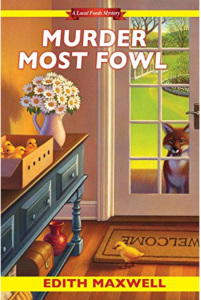
People often ask me which of my series is my favorite. And my answer, to copy what my author pal Holly Robinson says, is, “the one I’ve been working on most recently.” How can I choose? I picked, or rather, created each of my settings and story premises because I like spending time there. When I’m on the farm with Cam Flaherty, her chickens, and her locavores, I’m happy digging in the dirt and digging up dirt right along with her.
When I’m flipping pancakes with Robbie Jordan in southern Indiana, listening to Officer Buck drawl out his colorful southern sayings, or watching Robbie ride her bike up and down the scenic hills of 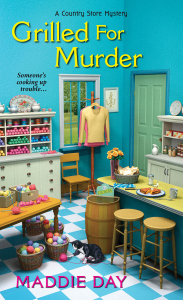 Brown County, I’m content. I enjoyed experiencing the slower pace of life in that part of the world for a few years and it’s always nice to be back.
Brown County, I’m content. I enjoyed experiencing the slower pace of life in that part of the world for a few years and it’s always nice to be back.
And when I’m hanging out with Quakers and friends in 1888, I love the long skirts, the men’s hats, the graceful carriages, even the wood stove and the chamberpot. It’s so confusing, when I’m immersed in writing a Quaker Midwife mystery, to walk the streets of my town where the books are set and see all these modern cars and electric lights. At least the Friends Meetinghouse looks very much the same as it did when my series takes place.
Sometimes when I’m writing about my characters, I wish I could find a picture of them (a picture including a head). I  know what they look like in my brain, and how I have described them, bit by bit, in the stories. My characters, especially my protagonists and their main sidekicks, are so real to me. It seems strange that I can’t Google them and find Cam’s picture on the farm web site, the photograph of Robbie with her late mom, or Rose’s portrait. (Although my story “A Questionable Death,” featuring my 1888 characters and setting, is up for a free read over at Kings River Life Magazine right now, and they came up with some great pictures to illustrate it.)
know what they look like in my brain, and how I have described them, bit by bit, in the stories. My characters, especially my protagonists and their main sidekicks, are so real to me. It seems strange that I can’t Google them and find Cam’s picture on the farm web site, the photograph of Robbie with her late mom, or Rose’s portrait. (Although my story “A Questionable Death,” featuring my 1888 characters and setting, is up for a free read over at Kings River Life Magazine right now, and they came up with some great pictures to illustrate it.)
We’ll all just have to settle for words. And that’s what we do here, after all – paint pictures with words and do our best to transport our readers into the worlds of our stories.
Readers: Which books transport you? Can you picture how the characters look, or doesn’t it matter? And anybody want to sign up to create a portrait of our protagonists?
Filed under: Edith's posts Tagged: A Questionable Death, Called to Justice, Kensington Publishing, Kings River Life Magazine, local foods mysteries, Midnight Ink, Mulch Ado about Murder, When the Grits Hit the Fan

January 22, 2016
Ask the Expert — Marc Cameron, Chief Deputy US Marshal (Retired)
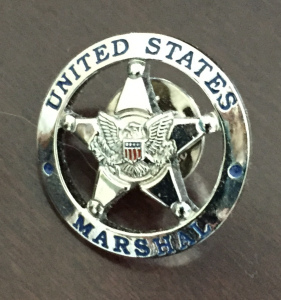 I am so excited to welcome guest Marc Cameron to the blog today. I met Marc at Bouchercon last October and must confess that before meeting him most of my knowledge about the US Marshal Service came from watching the movie The Fugitive. Okay, I also knew they flew on airplanes but that was about it. Marc gave me a quarter-sized US Marshal pin which I’m pretty sure means I’ve been deputized. I now walk a little taller and feel a little tougher than I used too. (I double checked that whole deputized thing with Marc and um, not so much. But don’t mess me with or I’ll whip out the pin.)
I am so excited to welcome guest Marc Cameron to the blog today. I met Marc at Bouchercon last October and must confess that before meeting him most of my knowledge about the US Marshal Service came from watching the movie The Fugitive. Okay, I also knew they flew on airplanes but that was about it. Marc gave me a quarter-sized US Marshal pin which I’m pretty sure means I’ve been deputized. I now walk a little taller and feel a little tougher than I used too. (I double checked that whole deputized thing with Marc and um, not so much. But don’t mess me with or I’ll whip out the pin.)
What does a US Marshal do and how does it differ from other law enforcement agencies?
The US Marshals Service has been around since George Washington formed it in 1789. In fact, it’s the oldest federal law enforcement agency in the United States. In the early days of the country US Marshals did everything—protected the president, investigated counterfeiters, hunted bootleggers, collected taxes and even took the census. Gradually, other agencies like the Secret Service, Alcohol Tobacco and Firearms, Customs, the FBI and others were formed and the deputy US marshals duties evolved into what they are today: Protecting Federal Judges (including Justices of the Supreme Court), transporting federal prisoners, managing the Witness Protection Program, managing seized federal assets, and hunting federal fugitives.
Where some agencies’ authority is strictly proscribed by US Code (like immigration, drug enforcement, customs, etc.) the statuary authority of a deputy US marshal is extremely broad, allowing us to “enforce all federal laws.” This authority allows the Attorney General of the United States to mobilize deputy marshals to assist with a wide variety of federal incidents including Coal Miner strikes, riots (such as the LA riots after the Rodney King Verdict), Operation Just Cause (the arrest of Manuel Noriega) and the aftermath of hurricanes like Andrew or Katrina. Before the fall of the Berlin Wall, US Marshals were the federal agency tasked with spy exchanges on the Glienike Bridge between Potsdam and West Berlin. We are a relatively small agency so deputies are often sent on temporary reassignment to augment areas of the country that need more staffing.
What is the training like to become a Marshal?
Deputy US Marshals go through a stringent background check and physical assessment in order to get hired. Many new hires have law enforcement and/or military experience. Once they are hired, deputy marshal trainees go through a rigorous sixteen week academy at the Federal Law Enforcement Training Center (FLETC) in Brunswick, Georgia. Constitutional Law, arrest procedures, defensive and offensive driving (bootlegger turns, ramming, blocking and pursuit), drug enforcement, and fugitive investigation are covered in classroom and practical settings. There is a sign as you drive on to FLETC that reads: “Role Playing in Progress. If ordered to halt, please comply.”
Marshals Service training is extremely physical with two to four hours of physical training and defensive tactics training every day—with lots and lots of running. There are several indoor and outdoor firearms ranges and many hours are also spent practicing and qualifying with sidearms and long guns, including fully automatic weapons. When I went through training we qualified with the UZI. Now they use an HK UMP or MP5. When I came aboard in 1991 we could carry our choice of sidearm as long as it met certain criteria. Now deputies are issued a Glock pistol in .40 caliber, an AR15 carbine and a 12 gauge shotgun. Some specialties get the UMP or MP5 as well.
 What did you do as a Marshal? Have any stories you are willing to share?
What did you do as a Marshal? Have any stories you are willing to share?
I was fortunate to work in several small two-person sub-offices in Texas and Idaho when I started out. Prisoner loads were lower and court was relatively light so we spent ninety percent of our time chasing fugitives—my favorite work within the Marshals Service. I spent three years along the Red River on the Texas side of the border with Oklahoma and four years in the panhandle area of Idaho working from the Canadian Border to central Idaho. Our offices were in Coeur d’Alene, one of the most beautiful places I have ever seen.
In 1998 I transferred to Alaska were I served as deputy in charge of the multi-agency Alaska Fugitive Task Force as well as a member of the Tactical Tracking Unit, a rural man-tracking team comprised of specially trained deputies. I eventually promoted to Judicial Security Inspector where I was tasked with the protection of federal judges in Alaska. For the last six years of my career I served as the Chief Deputy for Alaska. I had the most fun though as a POD (plain old deputy.)
Gobs and gobs of stories… Major Fugitive operations all over the US, plenty of bad guys, a handful of bad women, and a couple of hellacious fights—but through it all I was fortunate to work alongside some of the finest men and women on the planet. If I wasn’t writing novels full-time I wouldn’t have retired until they forced me out.
How did you end up becoming a U.S. Marshal? Did you always want to be in law enforcement?
I have wanted to be a police officer from the time I realized that they were the closest thing to Batman there is—fighting crime while wearing a costume/uniform and utility belt. I also wanted to write books. My sweet wife knew of both my dreams and bought me a bullet proof vest and an electric typewriter the first year we were married. Prior to getting a job with the US Marshals I worked as a police officer at a small department near Ft. Worth, Texas. I served on uniform patrol, mounted (horse) patrol, and as a detective, investigating everything from simple theft to homicide.
I saw my first deputy US marshal (other than on Gunsmoke) when I was in high school in Texas. He was a big guy and wore starched jeans, a pressed cotton shirt, a big silver belly hat and a .45 in decorative holster—much like the Texas Rangers I’d seen on TV. He got out of his truck on the courthouse square and put a bag over the parking meter that said “US Marshals Official Business”. I thought that would be a cool thing to have someday… I went on to work several fugitive cases with that same deputy I’d seen in my hometown when I was with the police department. That really got me interested in the Marshals Service. That deputy eventually did my background investigation a few years later when I was hired. One of the best days of my life was when I was finally issued my Marshals Service star badge and the nylon raid jacket with POLICE: US Marshal emblazoned on the back. Sappy I know, but it still gets me when I think about how fortunate I am.
What are three things we should know about being a U.S. Marshal?
There are very likely deputy US marshals operating in your city at some point or another; we’re just quiet so you might not ever even know we’re there—unless you’re a fugitive, then we’ll be knocking at your door in the wee hours of the morning.
We’re with the Department of Justice, but we’re not part of the FBI
Almost every major fugitive operation in the US (and many international investigations) involve the US Marshals because of our expertise. We’re don’t talk much about it though and would generally rather give the credit to the state or local agencies we are working with.
What do people usually get wrong when writing about U.S. Marshals?
Marshals handle the Witness Protection Program (commonly called Wit-Sec or The Program.) Several television shows and movies have actually gotten this right in recent years but I still see shows every year where it’s the FBI running the Program. It’s all pretty hush hush so we really don’t mind if other people take the credit for that either. It helps us do our job if we operate more in the shadows.
Marshal is spelled with ONE L. I am always surprised with how many get that wrong. I have a friend in the FBI who constantly spells it Marshall so I now spell his agency Federall Bureau of Investigation.
Con-Air is run much better and more securely than depicted on any move or television show. Tens of thousands of prisoners are moved around the US by plane, bus, and van every year. The real name for Con-Air is JPATS-Justice Prisoner and Alien Transportation System.
Do you use your expertise in your books?
I draw on my experiences as a police officer and deputy marshal all the time—Weapons I’m familiar with, driving techniques I’ve practiced, and fights I’ve been involved in all provide kernels of ideas that I spin into stories—taking certain liberties with the details of course. I was in a fight on patrol years ago in a restaurant kitchen where the bad guy kicked me into the lip of a stainless steel counter. My vest absorbed some of the trauma to my kidneys and I was able to arrest the guy—but I was off work and peeing blood for a few days. Jericho Quinn has a similar fight in Day Zero but he doesn’t make the same mistakes I did and comes through it with less of a problem. I certainly draw from the bad guys and gals I’ve dealt with when I’m writing.
During the early part of my career deputies spent a lot of time transporting prisoners in caged sedans. Since I knew I wanted to write novels, I used this time to chat with outlaws about their lives as I took them to prison. It was like going to school to be a Adventure novelist.
Just after we moved to Alaska I was involved in a foot pursuit after a fugitive in downtown Anchorage. The bad guy ran into one of our local bars that turned out to be a warren of different rooms, some with undies stapled to the ceiling, other with dancing, a Russian-theme, etc. I ended up busting through one door into a dim room where I came upon two girls in skimpy bras having a tug of war with a chain connected to steel hooks that pierced the flesh of their backs. First one to pull the other one across a line in the floor won. I’m not the sort to come upon scenes like this in the normal course of my evenings out, so when I heard on the radio that other deputies had caught my guy, I stood there for a minute and took it in, knowing that I would use it in a book one day. The scene ended up in State of Emergency pretty much the same as I saw it, right down to the description of one of the girls I turned into a villain.
 Jericho Quinn and his team are all a mixture of the great men and women I’ve been able to work from the Marshals Service and many other federal agencies. I’m fortunate that I have so much to draw from.
Jericho Quinn and his team are all a mixture of the great men and women I’ve been able to work from the Marshals Service and many other federal agencies. I’m fortunate that I have so much to draw from.
What are you working on now?
I’m always working on a Jericho Quinn book. BRUTE FORCE, sixth in the series, came out in January. I have to turn in #7, FIELD OF FIRE, in March. I already have an idea for #8 and will jump into it once I get my editor to approve it.
Marc Cameron is the New York Times Bestselling author of the Jericho Quinn Thriller series. His short stories have appeared in BOYS’ LIFE Magazine and the Saturday Evening Post. He’s published twelve novels. BRUTE FORCE, the newest Jericho Quinn Thriller, was released by Kensington in January of 2016. Marc is a retired Chief Deputy US Marshal and 29-year law enforcement veteran. He lives in Alaska with his beautiful bride and BMW motorcycle.
Visit him at:
http://www.marccameronbooks.com/
https://www.facebook.com/MarcCameronAuthor/
Readers: If you have a question about the US Marshal service, Marc will be stopping by as time allows to answer questions.
Filed under: Guest posts Tagged: Brute Force, deputy US Marshal, Field of Fire, Jericho Quinn, Marc Cameron, US Marshal, US Marshal Service

January 21, 2016
A Wicked Welcome to Laura DiSilverio
 Many thanks to Julie and the rest of the Wicked Cozy crew for inviting me here today. I was planning to talk about my new best-selling series, featuring the five women in the Readaholics Book Club in Heaven, Colorado who read classic mysteries and solve murders, but over the hols, I got caught up in a conversation I want to share instead.
Many thanks to Julie and the rest of the Wicked Cozy crew for inviting me here today. I was planning to talk about my new best-selling series, featuring the five women in the Readaholics Book Club in Heaven, Colorado who read classic mysteries and solve murders, but over the hols, I got caught up in a conversation I want to share instead.
Researchers talk about how twins sometimes develop their own language. Couples do, too. (I’m not asking for you to supply personal examples, but it’s not uncommon for couples to have special names for certain body parts, or code words for, ahem, intimacies.) Families also sometimes develop words or phrases that would leave anyone outside the family going “Huh?”

The goofafon with the druts circa 2005
In my family growing up, my father coined the word “drut” to refer to obnoxious, ill-behaving children, especially in public places. The astute among you will have noticed that “drut” is “turd” spelled backwards. I didn’t say this was going to be high-brow or clever, did I? I guess he came up with drut because it was marginally more acceptable to complain about “druts” in a restaurant than to offend the parents and passersby with the other term. The funny thing is, my brothers and I have perpetuated the use of this word in our own families. I expect to see it inducted into the Oxford English Dictionary any day now.
My hubby and kids and I came up with the words “smartaclesic” and “thinky power” years ago. I don’t remember the origin of them, but the girls were much younger. Proper use would be, “I used my thinky power to guess the killer in that Castle episode” (not that it takes much thinky power to figure out a Castle plot). Or, “It was smartaclesic of you to read the SparkNotes before writing your Hamlet essay.” As you can probably tell, there’s no shortage of sarcasm in our household.
Our previous dog (long gone to his heavenly reward) was a “goofador” because he was goofy and a Labrador retriever. Our new dog is equally goofy, but he’s a Wirehaired Pointing Griffon and “goofafon” is too hard to say. Maybe if we went with “goofagriff”?
I’m sure there’s some intellectual, scientific-sounding reason that couples/families do this, but without looking up reams of research, I’d guess it’s because it gives a sense of being inclusive in a special way. Such words can also bring back memories of special times together as a family.
Readers: What words or phrases did your family make up? Or, do the characters in your books and their families invent unique words? I’d love to hear some. Oh, yeah . . . while you’re thinking about it, go buy copies of The Readaholics and the Falcon Fiasco and The Readaholics and the Poirot Puzzle. I’m going to make a point of inventing a family-specific word for Amy-Faye Johnson and her family in the next installment!
More about The Readaholics and the Poirot Puzzle
Amy-Faye Johnson’s book club, the Readaholics, is engrossed in Murder on the Orient Express, and Poirot’s surprising resolution is stirring up debate. Is the solution remotely realistic? Is justice served by Poirot’s decision? Well, the book is fiction after all…
Then, just as Amy-Faye is planning the grand opening of her brother Derek’s pub,
his hot-headed partner is murdered. To keep Derek from being railroaded as a suspect, Amy-Faye and the Readaholics take a page from Poirot and investigate. But as the clues lead to unlikely places, surprising motives, and a multitude of suspects, Amy-Faye and her pals wonder if truth can be just as strange as fiction.
************************************

Laura DiSilverio is the national bestselling author of 15 mystery and suspense novels, and a retired Air Force intelligence officer. Her first standalone suspense novel, The Reckoning Stones, debuted in September and was a Library Journal Pick of the Month. Her Book Club Mystery series kicked off in 2015 with The Readaholics and the Falcon Fiasco and The Readaholics and the Poirot Puzzle. A Past President of Sisters in Crime, she pens articles for Writer’s Digest, and teaches writing in various fora. She plots murders and parents teens in Colorado, trying to keep the two tasks separate.
Filed under: Guest posts Tagged: Laura DiSilverio, The Readaholics and the Falcon Fiasco, The Readaholics and the Poirot Puzzle

January 20, 2016
Wicked Wednesday — Our Introduction to Poe’s Works
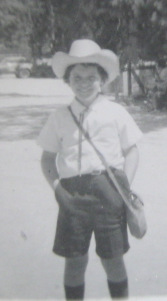
Edith at camp after fourth grade, taking a break from reading Poe
To celebrate Edgar Allan Poe’s birthday and the Edgar Allan Cozy anthology, today we talk about how we first “met” Poe. So Wickeds can you remember your very first Poe?
Edith: Oh, wow. I was in about fourth grade. I was reading anything (and everything) on my family’s extensive bookshelves. Sherlock Holmes was already one of my go-to reads. I don’t remember if my mom pointed me to Poe or if I just found his collected works. I do remember my terror at reading “Cask of Amontillado,” “Tell-Tale Heart,” and more. But it was terror mixed with the delight of reading a fabulous story, something I couldn’t put down.
Sadie/Susannah/Jane: My first real memory of Poe is doing a 7th grade English “unit” on his works. Pretty sure I had read the poetry and stories before that, but I distinctly remember turning in an essay to Mr. Palumbo (a teacher we all had a crush on–dark hair, big brown eyes, a seventies mustache, and a martial arts expert in a time and place where that was quite exotic) analyzing Poe’s deteriorating mental state as reflected in his poetry. It was, if I do say so myself, a masterpiece of junior high literary criticism and psychological diagnoses. And I’ve loved Poe ever since!
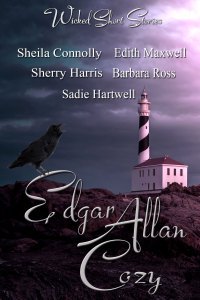 Liz: I’d read my share of Poe early on, but in college I took a really cool lit class. My teacher, Professor McHale, taught us how to really dig in and analyze literature, and he loved Poe. We did a lot of work with his stories, and it made me look at him in a whole new light. Always liked him, but that made me a huge fan.
Liz: I’d read my share of Poe early on, but in college I took a really cool lit class. My teacher, Professor McHale, taught us how to really dig in and analyze literature, and he loved Poe. We did a lot of work with his stories, and it made me look at him in a whole new light. Always liked him, but that made me a huge fan.
Sherry: I was spending the night with my friend Julie. We were sleeping in her basement and late at night turned on the TV with the sound down so her mom wouldn’t hear us. The movie The Pit and The Pendulum with Vincent Price was on. I was terrified and fascinated. I think the first two stories I read by Poe were The Raven and The Tell-Tale Heart. I could hear that heart beating for days when I was young.
Barb: Okay. I don’t remember. I am old. I think it was probably in one of the six schools I attended during what are now described as the middle school years. So since I have nothing pithy to say, I asked my daughter Kate who teaches short stories at the college level. She said students love discussing premediation vs. crime of passion vs. insanity in “Tell-Tale Heart,” but the one I really thought would be fun was re-imagining the narrator as female, since the he/she is never identified. It really changes the story.
Jessie: I read The Cask of Amontillado in high school. I have never been a fan of below-ground spaces and that really helped solidify that feeling.
Julie: I remember The Cask of Amontillado and freaking out. When I read the Dupin stories in a “History of the Mystery Novel” class, I rediscovered and newly appreciated Poe. Though some of his stories still freak me out.
Readers: Your first Poe experience? Are you a fan or not?
Filed under: Wicked Wednesday

January 19, 2016
Edgar Allan Cozy — Wicked Short Stories
 We are celebrating Edgar Allan Poe’s birthday with a new short story anthology! Last year Jane Haertel, aka Sadie Hartwell (aka Susannah Hardy), asked the Wickeds if we’d be interested in doing a short story anthology based on Edgar Allan Poe’s short stories — only these stories would have a twist — a cozy take on his original stories. The result is the ebook Edgar Allan Cozy. Here’s how we chose our stories:
We are celebrating Edgar Allan Poe’s birthday with a new short story anthology! Last year Jane Haertel, aka Sadie Hartwell (aka Susannah Hardy), asked the Wickeds if we’d be interested in doing a short story anthology based on Edgar Allan Poe’s short stories — only these stories would have a twist — a cozy take on his original stories. The result is the ebook Edgar Allan Cozy. Here’s how we chose our stories:
Edith: At a young age I was haunted – haunted, I tell you! – by the “The Tell-Tale Heart.”
![By Edgar Allan Poe (1809-1849) and W.W.Story [Public domain], via Wikimedia Commons](https://i.gr-assets.com/images/S/compressed.photo.goodreads.com/hostedimages/1453222670i/17799979.jpg)
From Wikimedia Commons
And by young I mean nine or ten. When the light went out in my room at night, I knew I could hear that heart beating under the floor. I didn’t know anything about sanity or insanity. I didn’t know what a rheumy eye was. But I could feel that story. I’m not sure my mother was entirely sane letting her third daughter read Poe and the tales of Sherlock Holmes in the fourth grade. Read them I did, though, over and over, and that reading started me on the path to where I have ended up: writing mystery, heart-stopping suspense, and even a bit of horror now and then. I tried to craft “An Intolerable Intrusion” after the manner of “The Tell-Tale Heart” — only with a modern twist.
Photo by Jljimenez via Wikimedia Commons
Sadie/Susannah/Jane: My story, “Within These Walls,” about a Shriner clown’s wife who inherits a brooding mansion set high on a bluff in Raven Harbor, Maine, is based on Poe’s “Cask of Amontillado.” While I love all the Poe stories and poems, this is the one that sticks with me. Our narrator gets his friend Fortunato drunk on Amontillado, a rare wine, then proceeds to wall him up–alive!–in his ancient house. I’m not in the least claustrophobic, but whenever I think of poor Fortunato dying, alone and desperate, in his dank, dark, sealed-up prison, I feel a little short of breath. A little palpitate-y. And it’s always driven me a bit mad that we never find out exactly what Fortunato did to his frenemy Montresor that motivated Montresor to get his revenge in this dreadful way. We’ll never know. But not to worry.. I gave the characters in my tribute story some specific motivations, so you won’t have to spend a lot of years wondering.
Sherry: A strange thing happened on the way to picking a Poe story for the anthology — I stopped to read the poem Annabel Lee because I hadn’t read it in years. And as soon as I finished reading it the story of Anna, Belle, and Lee popped into my head. It was one of those glorious moments in writing when something really flows. But because the poem is short, I needed to write a story too. I kept sorting through them and good heavens a lot of those stories are grim!
 Then I came across the partially finished story of The Lighthouse which is a diary with only three entries. It in itself is a mystery. Why isn’t it finished? Or is it finished? No one really knows and I liked that. In my story I write about a relative who tries to find out what happened to her missing great-great-great grandfather using his diary entries. But she has some problems of her own.
Then I came across the partially finished story of The Lighthouse which is a diary with only three entries. It in itself is a mystery. Why isn’t it finished? Or is it finished? No one really knows and I liked that. In my story I write about a relative who tries to find out what happened to her missing great-great-great grandfather using his diary entries. But she has some problems of her own.
Barb: We’ve all been transported by the rhythms, internal rhymes, and relentless story-telling of “The Raven.” But I’ve always wondered–what if the poem was moved to modern times? And what if the narrator was driven mad, not by a bird, but by the haranguing of a telemarketer? To answer these questions, I offer my updated version.
Sheila: While I had read most of Poe’s short stories years ago, I wanted to find something  I wasn’t familiar with, and discovered the 1883 story “MS. Found in a Bottle.” The narrator is a sailor who encounters some rather extreme circumstances during a voyage on a cargo ship at sea. Or does he? Some early readers have asked if Poe meant this as a satire, or a parody of some contemporary sea stories—although they never quite agreed on which author Poe was poking fun at. Still, the editor who published the story called it “distinguished by a wild, vigorous and poetical imagination.” I thought it might be interesting to see what would happen if I recast the story with the sailor telling his story to a modern audience, and whether he would be believed under different conditions.
I wasn’t familiar with, and discovered the 1883 story “MS. Found in a Bottle.” The narrator is a sailor who encounters some rather extreme circumstances during a voyage on a cargo ship at sea. Or does he? Some early readers have asked if Poe meant this as a satire, or a parody of some contemporary sea stories—although they never quite agreed on which author Poe was poking fun at. Still, the editor who published the story called it “distinguished by a wild, vigorous and poetical imagination.” I thought it might be interesting to see what would happen if I recast the story with the sailor telling his story to a modern audience, and whether he would be believed under different conditions.
Readers: Do you have a favorite Poe story?
Filed under: Group posts Tagged: Annabel Lee, Edgar Allan Cozy, Edgar Allan Poe, MS. Found in a Bottle, Sherlock Holmes, Tell-Tale Heart, The Lighthouse, The Raven

January 18, 2016
Just One Thing or How I Finally Managed To Write A Short Story
By Sherry in Northern Virginia where winter seems to be setting in.
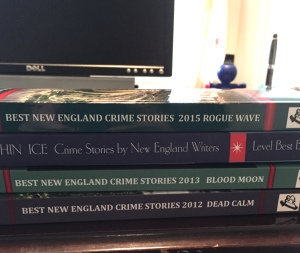 Short stories have been the bane of my existence — hmm that’s a little dramatic, so the bane of my writing existence. It seems like everyone I know writes them. I like to read them, but when it comes to me writing one, well, I fall short. When I lived in Massachusetts I always planned to write a short story to submit to the Level Best Books anthology. When I moved back to Northern Virginia I planned to write one to submit to the anthology for the Al Blanchard contest. I even had an idea for a story and wrote bits of it here and there but could never get it to gel.
Short stories have been the bane of my existence — hmm that’s a little dramatic, so the bane of my writing existence. It seems like everyone I know writes them. I like to read them, but when it comes to me writing one, well, I fall short. When I lived in Massachusetts I always planned to write a short story to submit to the Level Best Books anthology. When I moved back to Northern Virginia I planned to write one to submit to the anthology for the Al Blanchard contest. I even had an idea for a story and wrote bits of it here and there but could never get it to gel.
On the other hand, I have a short story contest to thank for starting me on my adult novel writing journey. I may have told you this story before so feel free to skip to the next paragraph. We were living in Dayton, Ohio when I saw a blurb in the newspaper for a short story contest. I’ll write one, I thought. My protagonist was a gemologist, the setting was Seattle, and there was a dead homeless woman. I sat down to write but just kept going, subplots, romances, and characters appeared. The short story contest was abandoned but my novel writing journey was born.
So along comes our very own Wicked accomplice Sadie/Susannah/Jane suggesting we do a short story anthology taking a well known author’s stories and giving them a cozy twist. “Sure,” I say, “I can do that.” (I’m starting to worry that I’m one of those people who if someone came along and said we should all go skydiving I’d say yes. Writing a short story seems almost as risky to me.) The group decided to write riffs on Edgar Allan Poe stories and I was soon wondering what I’d gotten myself in to.
I spent some time going through Poe stories. I’d forgotten how dark they were. I finally settled on a story called “The Lighthouse.” But I didn’t start writing.

My first attempt — at least I had a title.

Second attempt – title and who wrote it — this is progress.
The deadline came closer and I made many attempts but tossed them. I finally called story story writer and independent editor Barb Goffman and explained my problem: every time I started writing characters and subplots kept crowding my head. Barb said, “A short story is about just one thing.”
“But what about –”
“Just one thing.”
“But a romance –”
“Just one thing.”
“I thought of a character –”
“JUST ONE THING.”
 Okay, I got it. A short story is about just one thing. That’s what I chanted to myself as I wrote. I batted away those pesky subplots and characters that weren’t meant to be there. I finished the story. The anthology, Edgar Allan Cozy, comes out tomorrow.
Okay, I got it. A short story is about just one thing. That’s what I chanted to myself as I wrote. I batted away those pesky subplots and characters that weren’t meant to be there. I finished the story. The anthology, Edgar Allan Cozy, comes out tomorrow.
Readers: Have you ever tried to write a short story? Do you read them?
Filed under: Sherry's posts Tagged: Barb Goffman, Edgar Allan Cozy, Edgar Allan Poe, The Lighthouse


![Meow%20cover%20high%20res[1]](https://i.gr-assets.com/images/S/compressed.photo.goodreads.com/hostedimages/1453991649i/17901619.jpg)


